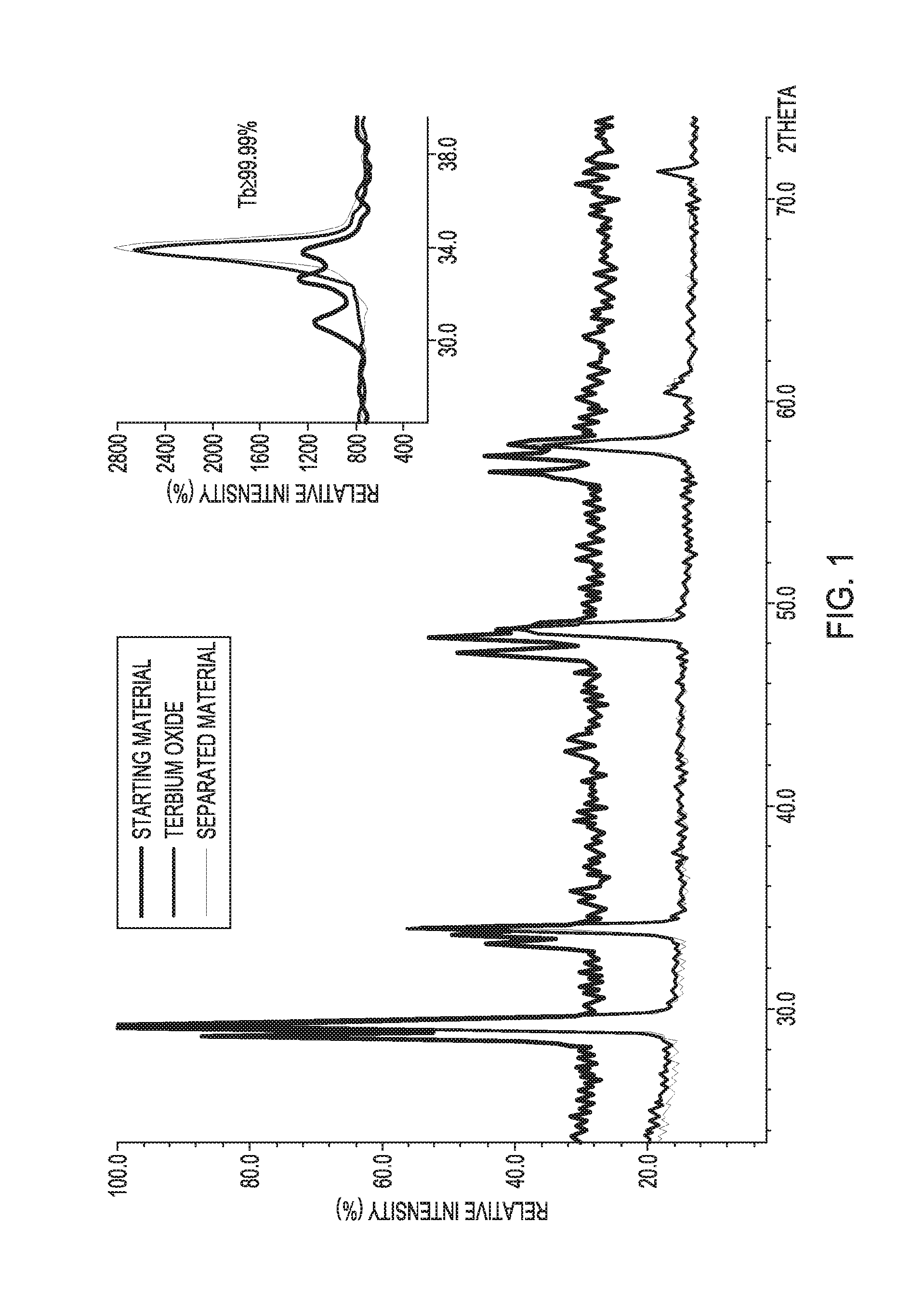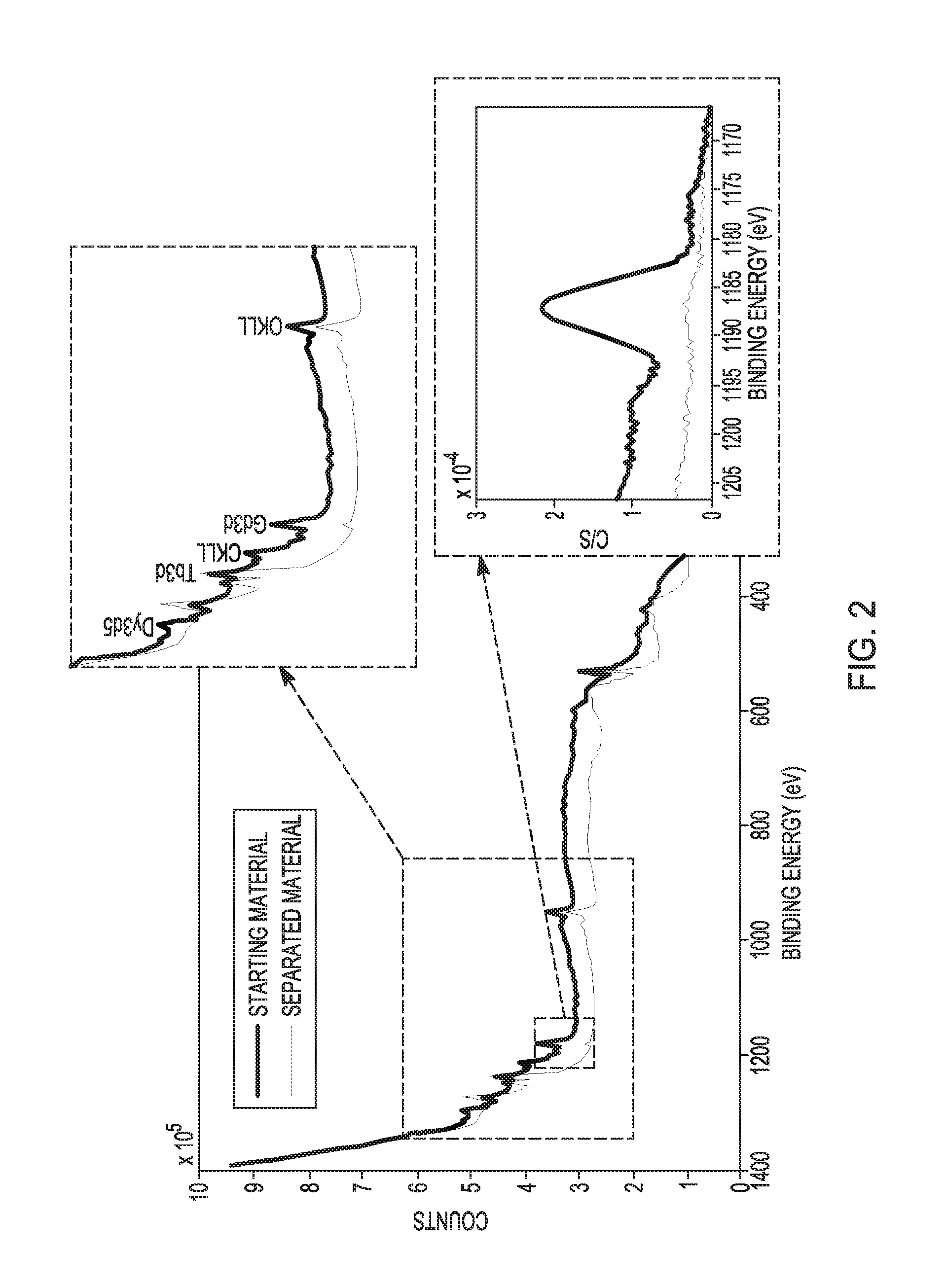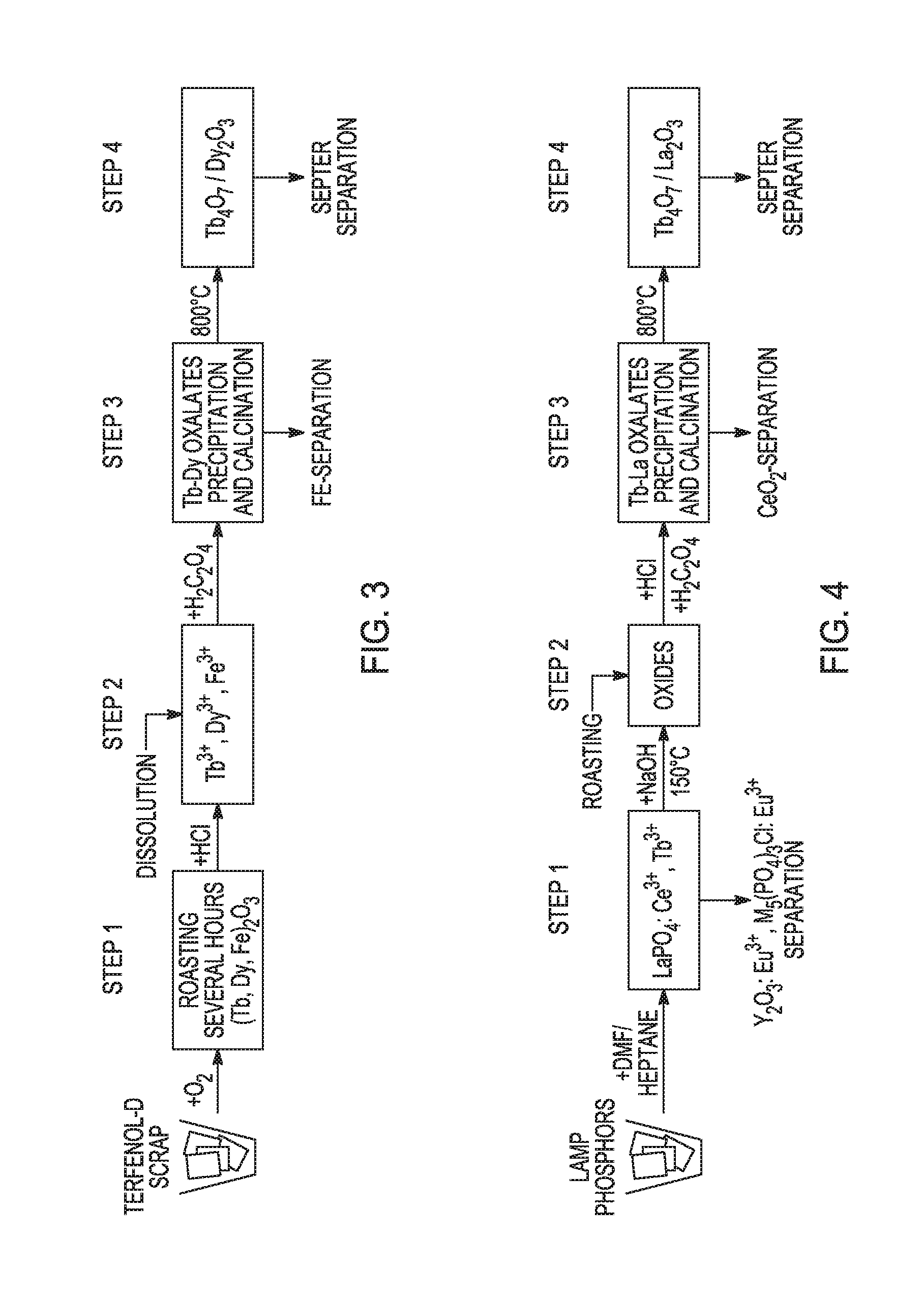Separation of terbium(iii,iv) oxide
a technology of terbium oxide and terbium oxide, which is applied in the direction of lanthanide oxide/hydroxide, phosphorus oxyacid, lanthanide oxide/hydroxide, etc., can solve the problems of time-consuming classical separation techniques, complex multi-stage processing sequences, and difficult separation, etc., to achieve high purity, cost-effective, and perform more quickly
- Summary
- Abstract
- Description
- Claims
- Application Information
AI Technical Summary
Benefits of technology
Problems solved by technology
Method used
Image
Examples
example 1
SEPTER
[0051]For testing our technology, the mixtures of lanthanide oxides containing Tb4O7 (˜190-210 nm particle size), were prepared by thermal decomposition of the corresponding oxalates at 800° C. In a typical bench-scale testing, to a starting material mixture of gadolinium oxide (Gd2O3, 123 mg, 0.339 mmol), dysprosium oxide (Dy2O3, 123 mg, 0.333 mmol), and terbium(III,IV) oxide (Tb4O7, 123 mg, 0.165 mmol), an excess (0.8 mL, 14 mmol) of glacial acetic acid in 3 mL of water (21 vol %) was added. The mixture was stirred under microwave irradiation (125 W) and heated in a sealed 10 mL vial to 150° C., the temperature was held for 30 seconds, and then cooled to room temperature (requiring in total about 10 min). The process was repeated twice to ensure complete separation. Undissolved terbium(III,IV) oxide was then separated via centrifugation, washed several times with water, and air dried at 100° C. The minimum yield is 86.1 mg (≧70%) of ≧99.5% pure Tb4O7. FIG. 1 illustrates a po...
example 2
Terfenol-D® (hypothetical)
[0052]The technology for manufacturing the highest magnetostrictive material, Terfenol-D®, an alloy with the composition of TbxDy1−xFe1.95 (x˜0.3), was developed in the 1980s at Ames Laboratory under a U.S. Navy funded program (http: / / www.etrema.com / about / ). Its initial application was in naval sonar systems but today is suitable also in magnetomechanical sensors, actuators, acoustic and ultrasonic transducers.
[0053]A proposed process of chemical separation includes: 1) roasting scraps of Terfenol-D® and their dissolution in diluted mineral acids (e.g. HCl); 2) separation of Tb and Dy from Fe (oxalate precipitation); 3) thermal conversion of oxalates to Tb4O7 and Dy2O3 at 800° C.; and 4) separation of Tb4O7 with the procedure described in Example 1. The process is illustrated in FIG. 3.
example 3
Lamp Phosphors (hypothetical)
[0054]Lamp phosphors in end-of-life fluoresceni lamps are a rich source of the heavy rare earths elements europium, terbium, and of yttrium. Five rare earth metal-containing phosphors are often encountered in fluorescent lamps: the red phosphor Y2O3:Eu3+ (YOX), the green phosphors LaPO4:Ce3+,Tb3+ (LAP), (Gd,Mg)B5O12:Ce3+,Tb3+ (CBT), (Ce,Tb)MgA11O19 (CAT) and the blue phosphor BaMgAl10O17:Eu2+ (BAM) or less commonly chloroapatite (Sr,Ca,Ba,Mg)5(PO4)3Cl:Eu2+.
[0055]In a proposed procedure, a mixture of Y2O3:Eu3+, LaPO4:Ce3+, Th3+ and (Sr,Ca,Ba,Mg)5(PO4)3Cl:Eu2+ are separated by a two-step two liquid flotation process, using N,N-dimethylformamide (DMF) as the polar phase and heptane as non-polar phase, as described in A. Otsuki et al., “Separation of rare earth fluorescent powders by two-liquid flotation using organic solvents”, Jpn. Appl. Phys., 2008, 47, 5093-5099. Separated LaPO4:Ce3+,Tb3+ can then be treated with NaOH at 150° C. to remove phosphate as Na...
PUM
| Property | Measurement | Unit |
|---|---|---|
| Temperature | aaaaa | aaaaa |
| Temperature | aaaaa | aaaaa |
| Fraction | aaaaa | aaaaa |
Abstract
Description
Claims
Application Information
 Login to View More
Login to View More - R&D
- Intellectual Property
- Life Sciences
- Materials
- Tech Scout
- Unparalleled Data Quality
- Higher Quality Content
- 60% Fewer Hallucinations
Browse by: Latest US Patents, China's latest patents, Technical Efficacy Thesaurus, Application Domain, Technology Topic, Popular Technical Reports.
© 2025 PatSnap. All rights reserved.Legal|Privacy policy|Modern Slavery Act Transparency Statement|Sitemap|About US| Contact US: help@patsnap.com



